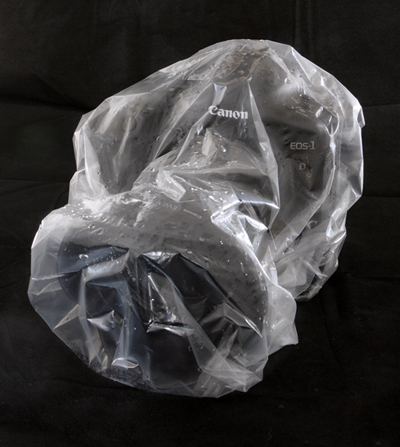
Condensation Recommendation
Every few years I travel to Yukon Territory and the Arctic Circle, in part to cover the incredible, 1,000-mile Quest dogsled race. The February temperature can dip to -40 degrees Fahrenheit for days at a time. I want to cover a particular issue related to photography in cold weather, namely condensation. But allow me to start this ‘lesson,’ if you will, in the tropics.
A few years ago I was onboard a cruise ship, lecturing as I do on digital photography. When we arrived at Tortola, I left the air conditioned ship and headed out to photograph the tropical paradise. As soon as I exited the ship’s security zone, I took the lens cap off my camera and… that’s when the trouble started.
Turns out my lens was completely fogged up from condensation. I had simply forgotten one of the most elemental laws of physics; when you move from a cold environment (meaning ‘dry’) to a warm one (meaning ‘wet’), water vapor will condense onto the surfaces of the colder objects. Yes, the vapor will eventually evaporate over a period of minutes to hours, but in the meantime the clouded lenses will prevent you from taking pictures. I always remember this when I’m out photographing in winter, but it just slipped my mind in the tropical environment.
I have seen people frantically wiping off their lenses to remove the condensation. That simply doesn’t work, since the lens surface will re-condense the moisture until it eventually reaches the same temperature as the outside warmer air. I have also seen people just keep on taking their pictures, unaware that they will turn out blurred when they later look at the pictures, due to the vaseline-like effect of shooting through the foggy lens. That’s especially true when dealing with small point-and-shoot cameras whose lenses are small and recessed into the camera. It’s hard to even notice the condensation.
But, there is a bigger problem involved with condensation. Don’t make the mistake of thinking that the condensation is showing up only on the lens surface. It is also occurring inside the camera! It may not wreak havoc the first time it happens, but it can ruin the internal electronics as that moisture corrodes the circuitry.
Now back to winter. The same exact phenomenon occurs in reverse; going from outside to inside. The solution to the problem is simple. Whenever you are out photographing snow scenes or family ski trips, always bring along a zip-top or otherwise totally sealable plastic bag (in other words, not a twist-tie). Just before coming indoors, place your camera in the plastic bag and seal the bag. Bring the camera in and let it sit. You will notice condensation forming on the outside of the bag. That is good! Wait until the camera achieves room temperature and then you can remove it safely.
Alternately, if you are an advanced amateur or professional photographer, just leave your camera in your zippered, weatherproof backpack for several hours after you go from cold to warm before removing your cameras.
BTW, if you do run into a condensation problem, the thing to do is to open up your camera back, open and empty the battery compartment and any open any other covered plug-in areas and let the camera dry out as quickly as possible. If you have a DSLR, uncouple the lens from the camera body. Make sure you also keep dust and debris from getting in at such vulnerable times.
In the meantime, stay warm when you are outside shooting (but that will be explained in a separate blog!).